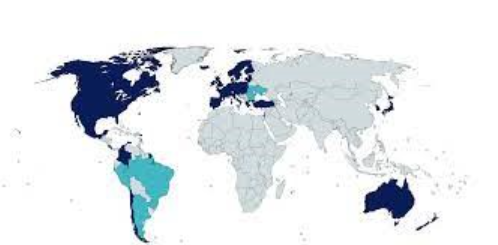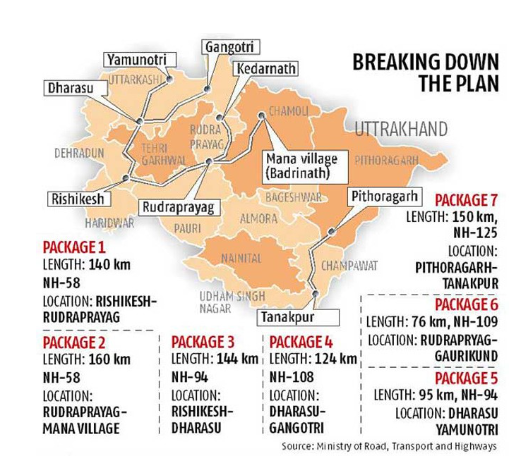Friday, 17th November 2023
State Funding of the Elections
In News: The Chief Justice-led Constitution Bench is reviewing the validity of the electoral bonds scheme, emphasizing on the transparency in election funding as a key issue.
What is State Funding of Elections?
State funding of elections entails the provision of financial support by the government to political parties or candidates, facilitating their participation in electoral processes and promoting fairness and equal opportunity in the democratic system.
Recommendations of various committees regarding state funding of elections
- Indrajit Gupta Committee (1998)
- Proposed state funding to establish a fair platform for parties with limited resources.
- Recommended restrictions: Only national and state parties with symbols should receive state funding, excluding independent candidates.
- Advocated short-term state funding for recognized political parties and their candidates in the form of specific infrastructure.
- Acknowledged the economic climate, suggesting partial, not complete, public funding.
- Law Commission Report on Electoral Law Reform (1999)
- Described state funding as "desirable" under the condition that political parties refrain from accepting money from other sources.
- Emphasized the need for a regulatory framework for effective implementation.
- Aligned with the Indrajit Gupta Committee on the feasibility of partial public assistance.
- National Commission to Review the Working of the Constitution (2001)
- Did not endorse state funding of elections.
- Supported the 1999 Law Commission's call for a regulatory framework, emphasizing its implementation before considering state funding.
- Second Administrative Reforms Commission (2008)
- Advocated partial state funding to curb "illegitimate and excessive funding" of election costs.
- Emphasized the ethical aspect of governance in its report on "Ethics in Governance."
Arguments in favour
- State funding of elections addresses the issue of candidates with questionable histories succeeding due to financial resources, fostering a more democratic internal environment within political parties.
- This practice reduces dependency on party funding, ensuring a level playing field that promotes healthy competition and equality between large and small parties, as well as independent candidates.
- State funding also curtails undue influence from influential individuals or groups, breaking the corporate-political connection and promoting citizen-centric decision-making.
- Equitable distribution of funds ensures fairness in pre-election spending, increases transparency, and helps curb corruption, fostering principles of openness, responsibility, and honesty for better governance.
- Additionally, in nations with a low per capita GDP, public funding acknowledges the impracticality of expecting a majority of the population to contribute financially to political parties.
Arguments Against
- Insufficient Allocation for Social Goals-The government's limited spending on vital areas like nutrition, education, and health may be further strained by diverting funds to finance elections, potentially hindering state welfare programs.
- Widening Gap and Lobbying Challenges-State-sponsored elections could widen the gap between political leaders and citizens, and parties may continue to receive unofficial funds from the business sector, undermining the intended purpose of state funding.
- Financial Challenges and Fiscal Deficit-The state may face difficulties financing elections, especially considering the existing fiscal deficit of the GDP, posing a challenge to the feasibility of public funding.
- Potential for Misuse and Distorted Incentives-Public funding might attract individuals into politics solely for subsidies rather than genuine commitment to development work, potentially distorting incentives.
- Logistical Challenges in India-Given the scale of elections in India, tracking expenses in the digital age becomes complex, necessitating substantial changes in election funding procedures.
- Prerequisites for Public Funding-The current environment may not be conducive to public funding unless fundamental reforms such as decriminalizing politics, comprehensive electoral finance changes, robust transparency, and strict anti-corruption enforcement are implemented.
Way Forward
- To counter the infiltration of illicit funds, the Rs. 2000 cash contribution limit should be eliminated, with all payments, even those of Rs. 2000, made through bonds or online.
- A yearly CAG audit can enhance transparency and protect donors' identities. Establishing a separate regulatory body for scrutinizing election expenses is essential.
- Considering the proposal of a national election fund, contributions from all donors would be distributed to parties based on election results or agreed-upon principles.
- While the 2nd ARC (2008 report) suggests partial state funding, strict enforcement of existing restrictions is crucial to curb the use of black money until broader state finance issues are addressed.
Source: TH
Branded and Generic Drugs: The Quality Conundrum
In News: Doctors are now prohibited from endorsing specific brands they trust due to a National Medical Council directive on August 3, 2023, requiring them to prescribe only generic names, sparking protests.
What are Branded and Generic Drugs?

- After the release of a new medicine, it is initially patented and marketed under a specific brand name and is called a branded drug.
- Branded drugs are more expensive because they’re newer, generally groundbreaking, and often for conditions that are difficult to treat.
- Once the patent expires, other companies can produce and sell generic versions of the drug.
- Generic drugs, identical to brand-name counterparts in active ingredients, dosage, safety, and efficacy, are produced and marketed after the expiration of the original drug's patent.
- In India, the Central Drugs Standard Control Organization (CDSCO) is the regulatory authority responsible for ensuring the quality and safety of generic drugs, employing a thorough evaluation process for approval and regulation.
About Compulsory Licensing
- Compulsory licensing is a legal tool enabling governments to permit third parties to produce, use, or sell a patented invention without the patent holder's consent.
- It is employed to balance patent holders' exclusive rights with public health or societal interests.
- The main goal is to provide access to essential goods or services, especially when patented products are expensive, inaccessible, or scarce, allowing other entities to manufacture and distribute them.
Benefits of Generic Drugs
- Cost savings due to increased competition post-patent expiration, equivalent effectiveness ensured through rigorous regulatory testing, and enhanced access to medications for a wider population.
- The introduction of generics fosters healthy competition, promoting innovation and efficiency in the pharmaceutical industry.
- Additionally, therapeutic alternatives become available, allowing patients to make informed choices based on factors like cost and personal preferences.
- Stringent regulatory standards provide assurance of safety and quality, supporting healthcare systems in managing budgets more efficiently by offering cost-effective alternatives.
Generic Drugs -The quality conundrum
- Bioequivalence Challenges-Generic drugs must demonstrate bioequivalence to the brand-name drug, meaning they should have similar pharmacokinetic and pharmacodynamic properties. However, subtle differences in formulation or manufacturing processes may impact bioequivalence.
- Inactive Ingredients-Generic drugs may contain different inactive ingredients (excipients) than the brand-name version. While these inactive components are generally considered safe, in some cases, patients may be sensitive or allergic to specific excipients, potentially causing adverse reactions.
- Variability Between Generics-Not all generic drugs are identical. There can be variations in the formulations of different generic versions of the same drug. While these differences are generally within acceptable limits, some patients or healthcare professionals may have concerns about consistency.
- Regulatory Oversight-In certain cases, the regulatory oversight and enforcement of quality standards for generic drugs may vary between countries. This can raise concerns about the reliability and consistency of generic medications from different regions.
- Perception and Confidence-Patients and healthcare professionals may have varying levels of confidence in generic drugs compared to brand-name medications. Concerns related to perception, trust, and confidence can impact the acceptance and adherence to generic drug therapies.
Challenges pertaining to compulsory generic medicine prescription in India
- Perceived quality concerns-Doctors and patients may harbor concerns regarding the quality and efficacy of generic drugs, especially if they perceive variations in manufacturing standards
- Limited brand options- Compulsory generic prescriptions may limit the options available to patients who have developed trust or preference for a particular brand
- Inadequate patient information- Patients may face challenges in obtaining sufficient information about the generic drug prescribed, including potential variations in formulation, inactive ingredients, or manufacturer reputation. This lack of information can impact patient understanding and confidence in the prescribed medication.
- Resistance from healthcare professionals- Some doctors may encounter challenges in adapting to the mandatory generic prescription system, especially if they believe that certain patients would benefit more from a specific brand
- Consistency in drug supply- Ensuring a consistent and reliable supply of generic drugs, especially in rural or remote areas, may pose challenges.
- Potential patient non-adherence- Compulsory generic prescriptions might lead to concerns about patient adherence, as individuals may be less motivated to adhere to a treatment plan if they perceive generic drugs as inferior
- Pharmacovigilance issues- Monitoring and reporting adverse effects or unexpected reactions related to generic drugs may be a challenge. Limited awareness and reporting mechanisms could impact pharmacovigilance efforts.
Way Forward
- To address challenges with compulsory generic prescription in India, focus on comprehensive education, awareness campaigns, and clear prescription information.
- Promote trustworthy generic brands, streamline the supply chain, and implement robust pharmacovigilance.
- Provide continuous medical education for healthcare professionals, foster a patient-centric approach, and encourage flexibility in prescribing drugs based on individual needs.
- Regularly evaluate and adapt policies to ensure the successful implementation of compulsory generic prescription while optimizing patient outcomes.
Source: TH
ASEAN - Edukemy Current Affairs
In News: Defence Ministers from ASEAN and partner nations endorse India's proposal to chair a counter-terrorism expert working group.
About ASEAN

- ASEAN, established in 1967 with the motto "One Vision, One Identity, One Community," comprises member nations Indonesia, Malaysia, Philippines, Singapore, Thailand, Brunei, Vietnam, Laos, Myanmar, and Cambodia.
- Its genesis aimed at fostering stability in the Asia-Pacific region.
- Over the years, membership expanded, and in 2008, the legally binding ASEAN Charter was enacted.
- The ASEAN Community has three pillars: Political-Security, Economic, and Socio-Cultural.
- Objectives include economic growth, regional peace, and collaboration.
- Decision-making involves consultation and consensus.
- ASEAN-led forums like ARF, ASEAN Plus Three, and EAS contribute to regional cooperation on political, security, and economic issues.
ASEAN's Multifaceted Influence in Asia-Pacific
- ASEAN wields significant influence in Asia-Pacific across trade, political, and security realms, surpassing individual member states' capabilities.
- With the world's 3rd largest population, over half below 30, and as the 3rd largest market, ASEAN stands as the 6th largest global economy.
- Its extensive network of Free Trade Agreements, including with major economies, positions it as the 4th most attractive investment destination.
- Over the years, ASEAN's share of global exports has risen to 7%, reflecting its growing economic importance.
- Initiatives like the ASEAN Single Aviation Market enhance regional connectivity, contributing to both economic and political stability.
Challenges and Disparities Within ASEAN
- ASEAN faces challenges stemming from regional imbalances, economic and social disparities, and diverse political systems among its member states.
- Disparities in GDP per capita, from Singapore's high of nearly $53,000 to Cambodia's low of less than $1,300, highlight economic inequalities.
- Resource constraints hinder the implementation of regional initiatives in less developed countries.
- The organization grapples with internal rifts over issues like the South China Sea and human rights concerns, exemplified by the Rohingya crisis in Myanmar.
- The emphasis on consensus, while a strength, can also lead to avoidance rather than resolution of difficult problems.
- Lack of a central enforcement mechanism and inefficient dispute-settlement mechanisms further contribute to the challenges within ASEAN.
India-ASEAN Relations: A Strategic Partnership for Growth and Cooperation
- India's relationship with ASEAN is a crucial element of its foreign policy and the Act East Policy.
- With 25 years of Dialogue Partnership, 15 years of Summit Level interaction, and 5 years of Strategic Partnership, the ties are deep-rooted.
- In terms of economic cooperation, ASEAN is India's fourth-largest trading partner, accounting for approximately 10.6% of India's overall trade.
- The ASEAN-India Free Trade Area has been successfully established.
- Financial assistance is extended through funds like the ASEAN-India Cooperation Fund and others.
- India places ASEAN at the center of its Indo-Pacific vision, emphasizing Security and Growth for All in the Region.
- The Delhi Declaration and annual Delhi Dialogue further solidify the strategic partnership, and the ASEAN-India Centre actively engages in policy research and advocacy.
Source: TH
FCRA RULES - Edukemy Current Affairs
In News: Shanghai based American, facing charges and denying them is also implicated in a First Information Report filed by the CBI, alleging a violation of the Foreign Contribution (Regulation) Act.
About FCRA (The Foreign Contribution (Regulation) Act)
- The Foreign Contribution (Regulation) Act (FCRA) was enacted in 1976 to address concerns of foreign interference during the Emergency period.
- It regulates foreign donations to individuals and associations to ensure alignment with democratic values.
- The 2010 and 2020 amendments aimed to consolidate laws and tighten restrictions on foreign contributions, including limiting administrative expenses.
- FCRA registration is essential for receiving foreign donations, covering diverse areas such as culture, education, and religion.
- Prohibitions include involvement in fictitious entities, religious conversion, communal tension, sedition, and certain professions receiving foreign funds.
- Registration is valid for five years, with renewal required, and non-compliance may lead to cancellation and a three-year re-registration ban for NGOs.
About FCRA rules 2022
In July 2022, the Ministry of Home Affairs (MHA) implemented modifications to FCRA rules, expanding the number of compoundable offences from 7 to 12. The amendments also elevated the threshold for contributions from overseas relatives not mandating government intimation from Rs 1 lakh to Rs 10 lakh and extended the timeframe for reporting the opening of bank accounts.
Challenges Faced by NGOs Under FCRA Regulations
- Concerns Regarding Strict Compliance
- NGOs encounter difficulties in adhering to the stringent FCRA registration process due to extensive documentation requirements and interpretive ambiguities, potentially allowing authorities to target and restrict their activities.
- Administrative Delays Impacting NGOs
- The prolonged administrative procedures associated with FCRA registration and renewal create delays that hinder the operational efficiency and funding accessibility of NGOs.
- Transparency Issues in Fund Utilization
- Certain NGOs face criticism for a lack of transparency in utilizing foreign funds acquired under the FCRA, raising concerns when the purposes and beneficiaries of these funds are not clearly disclosed.
- Uneven Access to Funding Opportunities
- The intricate FCRA registration process presents challenges for organizations, leading to high denial rates that impact their capacity to receive foreign contributions.
- Potential Political Influence in FCRA Registration
- Concerns have been raised regarding potential political influence in the FCRA registration and regulation process, introducing uncertainties that may influence the approval or denial of FCRA registrations.
Way Forward
- Enhance oversight mechanisms to prevent potential misuse of foreign contributions.
- Streamline and expedite the FCRA registration process to facilitate increased funding accessibility for legitimate NGOs.
- Uphold the independence of FCRA registration and regulation processes, free from political influence, and grounded in objective criteria.
- Encourage NGOs to submit comprehensive reports on the utilization of foreign funds, emphasizing clear disclosure of purposes and beneficiaries.
Source: TH
UNSC - Edukemy Current Affairs
In News: The Council, consisting of 15 nations, adopted a resolution urging the prompt and unconditional release of all hostages held by Hamas and other groups.
About UNSC
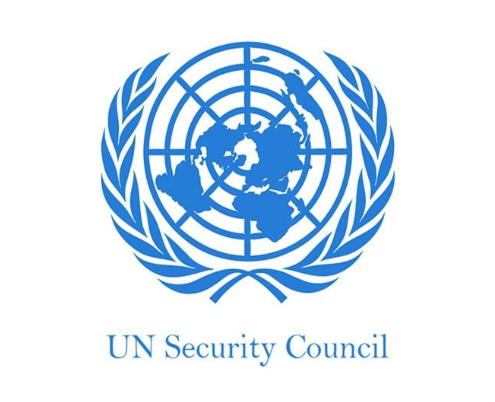
- The United Nations Security Council (UNSC), established in 1945, is a principal organ of the UN focused on maintaining international peace and security.
- With 15 members, including five permanent (P5) and ten non-permanent members, the UNSC's decisions require nine affirmative votes.
- India, a non-permanent member, joined for the eighth time in 2021, serving a two-year term.
- The rotating presidency, voting powers, and diverse membership underscore the Council's commitment to inclusive decision-making and addressing global challenges.
- Regional distribution of non-permanent seats ensures varied representation, facilitating diplomacy and recognizing the specific interests of different regions.
India and UNSC
- India, actively engaged since the formulation of the Universal Declaration of Human Rights, has consistently advocated against racial discrimination and played a vital role in shaping UN decisions.
- Contributing significantly to global peace and security, India has participated in 43 UN Peacekeeping missions, deploying over 160,000 troops.
- With a rationale grounded in factors like population, GDP, and substantial contributions to the UN, India asserts its demand for a permanent seat in the UNSC.
Source: TH
ED - Edukemy Current Affairs - Edukemy Current Affairs
In News: The Enforcement Directorate (ED) has issued new summons to a Shanghai-based American millionaire through the Ministry of External Affairs regarding the NewsClick case.
About ED
- The Enforcement Directorate (ED) is a financial investigation agency in India, operating under the Ministry of Finance.
- Established in 1956, it initially focused on violations of the Foreign Exchange Regulation Act.
- Over time, it evolved to enforce the Foreign Exchange Management Act (FEMA) and the Prevention of Money Laundering Act (PMLA).
- The agency's structure includes a Director of Enforcement, Special Directors, Deputy Directors, and Assistant Directors.
- The ED's statutory functions involve enforcing COFEPOSA, FEMA, PMLA, and the Fugitive Economic Offenders Act.
- It conducts searches, seizures, and arrests, attaching properties of economic offenders.
- The agency's jurisdiction covers all of India, with actions taken based on complaints and investigations, addressing offenses related to money laundering and foreign exchange violations.
|
UPSC Previous Year Questions Mains (2021) Q. Discuss how emerging technologies and globalisation contribute to money laundering. Elaborate measures to tackle the problem of money laundering both at national and international levels |
Source: TH
LVM3 - Edukemy Current Affairs
In News: ISRO stated that the cryogenic upper stage of the LVM3 M4 launch vehicle, used for India's Chandrayaan-3 moon mission, re-entered the Earth's atmosphere uncontrollably.
About Launch vehicles and LVM3

- The Indian Space Research Organisation (ISRO) operates three classes of launch vehicles, including the PSLV, GSLV, and SSLV.
- The PSLV is known for its reliability and can carry up to 3.8 tonnes to Low Earth Orbit.
- The GSLV is designed for heavier payloads and higher orbits, with the most powerful configuration being the LVM-3.
- The LVM-3 is a three-stage launch vehicle:
- First Stage-Consists of two S200 boosters strapped to the sides, powered by hydroxyl-terminated polybutadiene solid fuel.
- Second Stage-Powered by Vikas Engines using liquid fuel (nitrogen tetroxide or unsymmetrical dimethylhydrazine).
- Uppermost Stage-Powered by a cryogenic engine, combusting liquified hydrogen with liquified oxygen. This stage enables the rocket to lift up to 8 tonnes in low earth orbit.
- Notable LVM-3 missions include
- OneWeb India-2 Mission
- OneWeb India-1 Mission
- Chandrayaan-2 Mission
- GSAT-29 Mission
- GSAT-19 Mission
- CARE Mission
- The LVM-3 has been instrumental in launching a variety of missions, showcasing its versatility in handling different payloads and mission objectives.
Source: TH
INS Sumedha - Edukemy Current Affairs
In News: The Indian Navy concluded its second anti-piracy patrol in the Gulf of Guinea (GoG) in the Atlantic Ocean, with the Offshore Patrol Vessel INS Sumedha.
About INS Sumedha
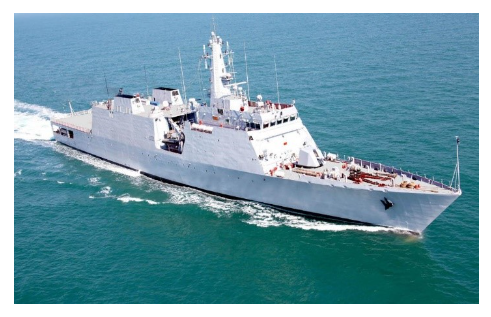
- INS Sumedha, an indigenously constructed Naval Offshore Patrol Vessel, is actively engaged in various roles both independently and in support of Fleet Operations.
- Positioned within the Indian Navy's Eastern Fleet, based at Visakhapatnam, it operates under the operational command of the Flag Officer Commanding-in-Chief, Eastern Naval Command.
- As the third vessel of the indigenous Naval Offshore Patrol Vessel (NOPV) Project to be commissioned into the Indian Navy, INS Sumedha was designed and constructed by Goa Shipyard Limited.
- Its primary responsibilities include conducting surveillance in the Exclusive Economic Zone (EEZ), anti-piracy patrols, supporting fleet operations, ensuring maritime security for offshore assets, and participating in escort operations for high-value assets.
Source: TH
Rakhine Town - Edukemy Current Affairs
In News: The military in Myanmar bombarded a town in the western Rakhine state and deployed helicopters to assault fighters belonging to an ethnic minority.
About Rakhine Town
- Rakhine Town is a locality situated in the Rakhine State of Myanmar.
- The Rakhine State, also known as Arakan State, is located in the western part of Myanmar and is known for its rich cultural and historical heritage.
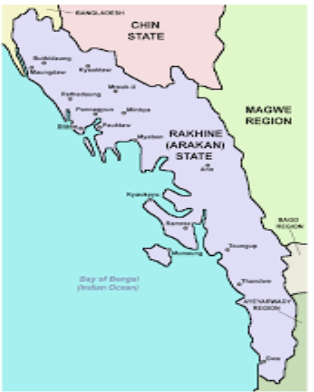
- Rakhine State has a diverse population, and its history is intertwined with various cultures and influences.
- The region is known for its picturesque landscapes, including coastal areas along the Bay of Bengal and mountainous terrain.
- The state is home to various ethnic communities, with the Rakhine people being a prominent group.
- The state has faced challenges, including communal tensions and displacement, particularly involving the Rohingya Muslim minority.
- The town and the broader region have been the focus of international attention due to humanitarian concerns and human rights issues.
Source: TH
Pulwama - Edukemy Current Affairs
In News: Security forces have encircled a group of militants and exchanged heavy fire during an operation in Pulwama.
About Pulwama

- Pulwama is a town located in the Pulwama district of the Indian union territory of Jammu and Kashmir.
- It gained international attention due to a tragic incident that occurred on February 14, 2019.
- In this incident, a convoy of Indian paramilitary personnel was attacked by a suicide bomber in the Pulwama district.
- The attack resulted in the loss of many lives and heightened tensions between India and Pakistan.
- The town itself is situated in the picturesque Kashmir Valley and is known for its scenic beauty.
- The region has significance not only for its landscape but also for its historical and cultural heritage.
- Agriculture is a crucial economic activity in Pulwama, with the cultivation of saffron being one of its notable agricultural products.
Source: TH
Rethinking Electoral Bonds: Challenges & Solutions
Context: As the constitutionality of electoral bonds faces increasing challenges, it is imperative for citizens to advocate for a fairer electoral landscape in the upcoming elections.
What are Electoral Bonds?
- The electoral bonds system, introduced in 2017 through a Finance bill and implemented in 2018, provides a mechanism for individuals and entities to contribute to registered political parties while maintaining donor anonymity.
- Key features include the issuance of bonds in denominations ranging from Rs 1,000 to Rs 1 crore by the State Bank of India (SBI), being payable to the bearer on demand and interest-free.
- These bonds can be purchased by Indian citizens or entities established in India, individually or jointly, and are valid for 15 calendar days from the date of issue.
- SBI is the sole authorized issuer of electoral bonds, distributed through designated branches.
- Eligibility for political parties to receive these bonds is contingent on being registered under Section 29A of the Representation of the People Act, 1951, and securing not less than 1% of the votes polled in the last general election.
- Electoral bonds can be acquired digitally or through cheques, with encashment permitted only through an authorized bank account of the political party.
- To ensure transparency and accountability, parties must disclose their bank account details with the Election Commission of India (ECI), and the entire donation process is conducted through banking channels.
- Political parties are also obligated to explain the utilization of the funds received.
- The system's benefits include heightened transparency in political party funding, accountability in disclosing donation utilization, discouragement of cash transactions, and the preservation of donor anonymity.
Issues with electoral Bonds
- The electoral bonds scheme, aimed at bringing transparency to election funding, has faced significant criticism for contradicting its basic idea.
- Critics argue that the anonymity provided by electoral bonds only shields donors from the broader public and opposition parties, leaving room for potential extortion and unfair advantages for the ruling party.
- The bonds, sold through a government-owned bank (SBI), raise concerns about the government's ability to identify donors, potentially leading to extortion or victimization of contributors.
- Additionally, the exemption of political parties from disclosing donations under the scheme compromises the voters' right to know, a fundamental aspect of a representative democracy.
- The Electoral Bonds Scheme has been accused of favoritism towards wealthy corporates, as it enables unlimited corporate donations with 100% tax exemption.
- This, coupled with the lack of transparency, opens the door to crony capitalism, allowing well-resourced corporations to influence elections without limits.
- The scheme's impact on free and fair elections is questioned, as the government can access donor details, potentially disrupting the democratic process.
- The removal of pre-existing limits on political donations further exacerbates concerns about crony capitalism, fostering close relationships between business leaders and government officials.
Way Forward
- Effective regulation of political financing, coupled with bold reforms, is essential to disrupt the harmful cycle of corruption and the deterioration of the quality of democratic governance.
- It is imperative to address the loopholes in existing laws to enhance accountability and transparency throughout the governance machinery.
- Citizens can play a significant role in driving substantial changes by advocating for awareness campaigns.
- By rejecting candidates and political parties that engage in overspending or bribery, voters can contribute to elevating the standards of democracy.
Source: TH
Share the article
Edukemy’s Current Affairs Quiz is published with multiple choice questions for UPSC exams
MCQ
Get Latest Updates on Offers, Event dates, and free Mentorship sessions.

Get in touch with our Expert Academic Counsellors 👋
FAQs
UPSC Daily Current Affairs focuses on learning current events on a daily basis. An aspirant needs to study regular and updated information about current events, news, and relevant topics that are important for UPSC aspirants. It covers national and international affairs, government policies, socio-economic issues, science and technology advancements, and more.
UPSC Daily Current Affairs provides aspirants with a concise and comprehensive overview of the latest happenings and developments across various fields. It helps aspirants stay updated with current affairs and provides them with valuable insights and analysis, which are essential for answering questions in the UPSC examinations. It enhances their knowledge, analytical skills, and ability to connect current affairs with the UPSC syllabus.
UPSC Daily Current Affairs covers a wide range of topics, including politics, economics, science and technology, environment, social issues, governance, international relations, and more. It offers news summaries, in-depth analyses, editorials, opinion pieces, and relevant study materials. It also provides practice questions and quizzes to help aspirants test their understanding of current affairs.
Edukemy's UPSC Daily Current Affairs can be accessed through:
- UPSC Daily Current Affairs can be accessed through Current Affairs tab at the top of the Main Page of Edukemy.
- Edukemy Mobile app: The Daily Current Affairs can also be access through Edukemy Mobile App.
- Social media: Follow Edukemy’s official social media accounts or pages that provide UPSC Daily Current Affairs updates, including Facebook, Twitter, or Telegram channels.


